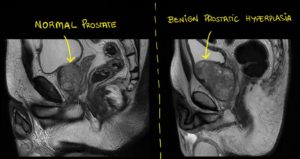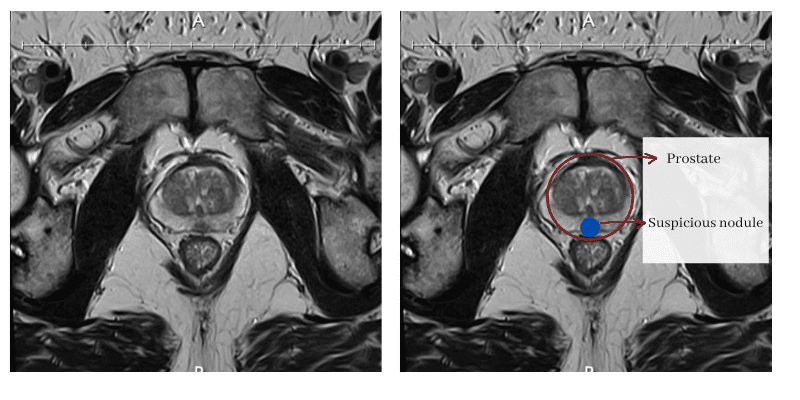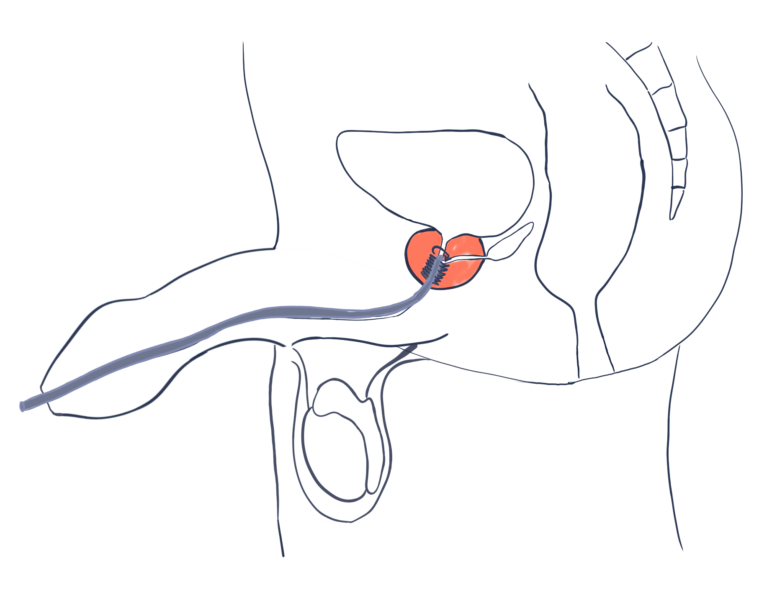Benign prostatic hyperplasia (BPH) is very frequent in men over 60 years old. At age 80, 30% of men suffer it. It can scare you out, because its symptoms are similar to those of prostate cancer. However, BPH is benign, and it can be treated.
Table of Content
Benign prostatic hyperplasia: symptoms
The prostate surrounds our urethra, the tube through which we pee. If the prostate gets bigger, it will narrow our urethra and prevent normal peeing.

Some of the most frequent symptoms are:
- You have to pee too often
- Need to get up during the night to pee.
- Difficulty starting to pee (“it won’t come out”).
- Weak pee flow, sometimes it stops-starts-stops…
- You can’t empty your bladder completely.
Other less frequent symptoms are urinary infections and getting blood in your pee.
How to diagnose benign prostatic hyperplasia
Before we treat benign prostatic hyperplasia we must make sure about the diagnosis. This means excluding it is not prostate cancer. There are several tests that help us differentiate between the two: PSA (blood test), MRI, biopsy… If you want to read about prostate cancer you can check this post.
You probably won’t need all of them. Sometimes it’s just enough with a digital rectal exam and lab tests. If there are important doubts whether it’s hyperplasia or cancer, that’s when you may need some of the more advanced ones, like MRI.

How to treat benign prostatic hyperplasia
Drugs
In mild and moderate cases, it’s usually a good idea to start with some medication. This is, in many cases, enough to control symptoms.
Some of the most common drugs are alpha blockers. They relax involuntary muscles, like the ones surrounding the urethra. This allows the urethra to “un-contract” and allows pee to go through. Their effect is fast, usually in a few days. They can have some side effects due to their effect in other parts of your body, like dizziness and retrograde ejaculation (semen goes back into the bladder instead of outside). Some of the alpha-blockers are doxazosin, alfuzosin… (just different names for similar types of drugs).
On the other side we have 5-alpha reductase inhibitors. These work by inhibiting the effect of your testosterone. Because testosterone stimulates prostate growth, these drugs prevent it from getting too large. The effect takes longer, several months. The most popular one is called finasteride. They can have some side effects like weakness, headache, dizziness…
Minimally invasive procedures
If your symptoms are severe, or you can’t control them with drugs, you may want to consider these procedures.
The most effective procedure is transurethral resection of the prostate (TURP).
TURP
The urologist introduces a tube through your urethra. When it reaches the “narrowing”, it removes the prostatic tissue around it, like a sharp spoon. That way, it “digs” more space around it and widens it.
This really is an amazing procedure because its so simple. It is done from the outside, without having to perform an open surgery. We call it a minimally invasive procedure.
Of course there can be some minor complications, like bleeding, but all in all it’s a great option: it has great effect for a little risk. Usually, it requires only spinal anesthesia, which only affects the lower part of your body.

Leave a Reply